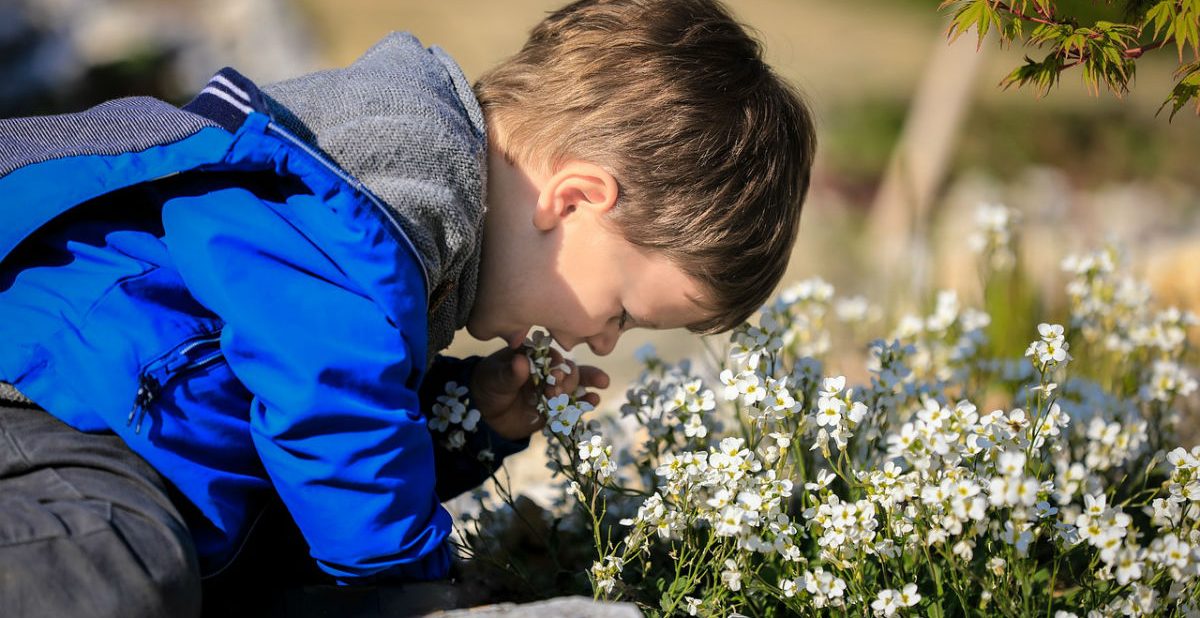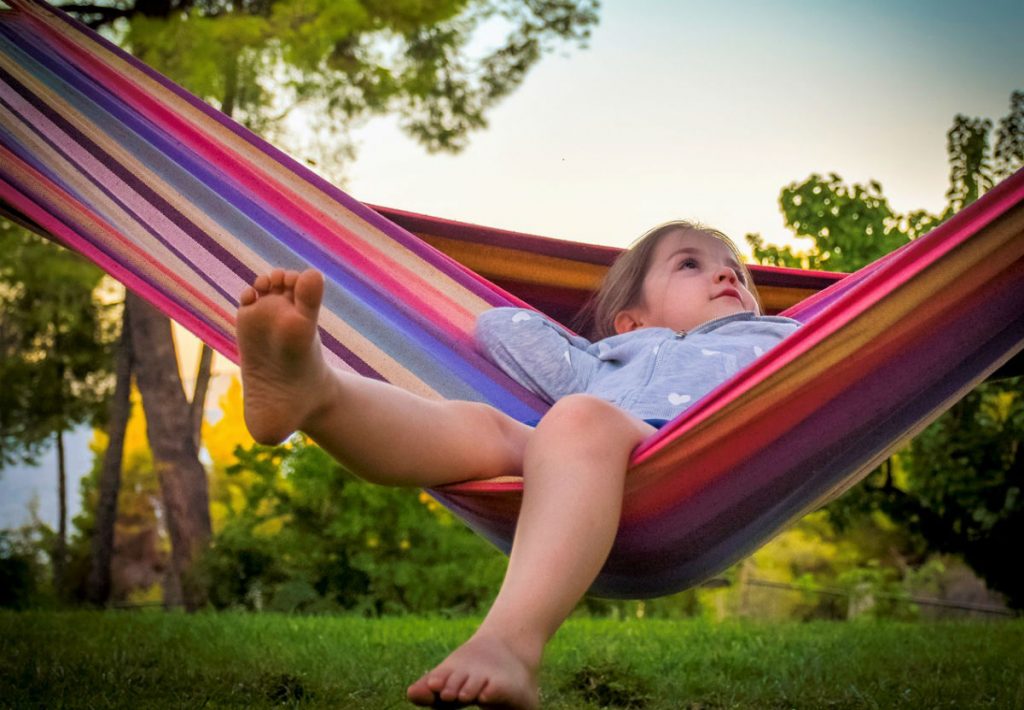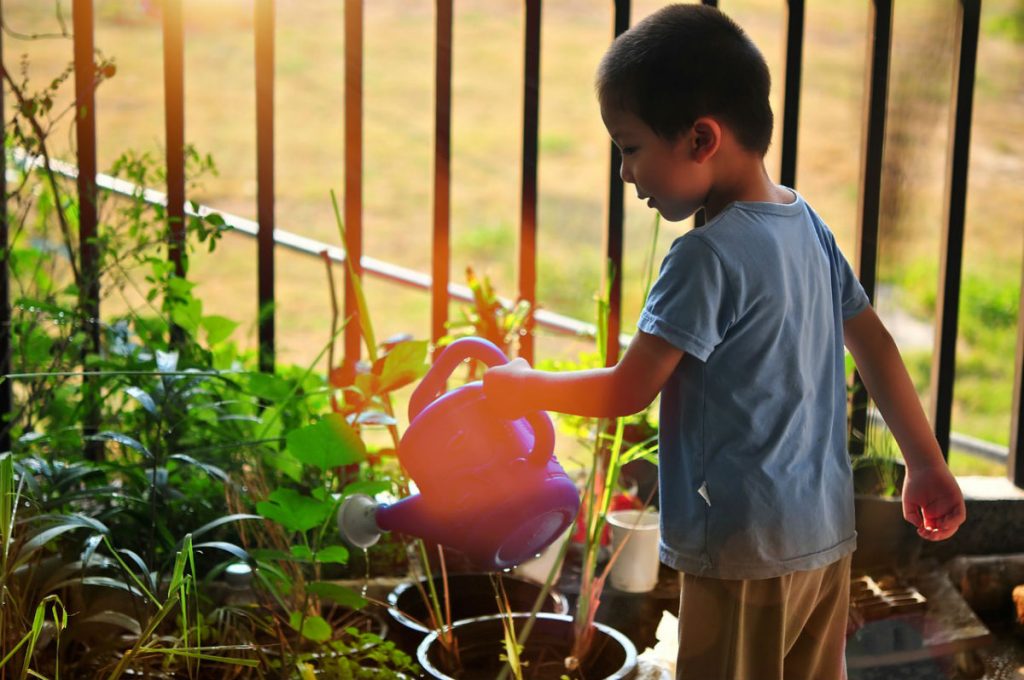
How to plan a sensory garden that your child will love
Creating a beautiful sensory garden in your backyard is a doable activity – even for the non-green thumbed amongst us!
While you can be overawed (and overwhelmed) by the incredible Pinterest projects by talented landscapers and the super-crafty, it is important to remember that the real goal of a sensory garden is to provide a space that your entire family can enjoy together while providing the sensory input your child requires.
Sensory gardens can be very therapeutic for children with sensory processing disorders, ASDs, traumatic brain injuries and more. They also provide a rich sensory diet for all of us and are a wonderful way to connect, outdoors, with the whole family.
Now, if your gardening technique is more the patch of lawn with a weed or two along the borders variety, or even a deck or balcony with a token pot plant: never fear. You don’t need a lot of space or gardening nous to create a useful and enjoyable sensory space. We have plenty of tips and ideas to help you create the ideal sensory garden for your family using the space and budget you have!
Things to think about before you start:
WHAT ARE YOU AIMING TO ACHIEVE WITH YOUR GARDEN?
Is your child a sensory seeker or sensory avoidant? If you are unsure, it may be worth chatting to an OT about this. You may choose to create a garden that suits one of those sensory pro les entirely – or choose to have zones that gently stimulate the senses, and others that are more calming.
WHERE YOU LIVE
It just makes sense to plant a garden that will grow well in the climate you live in. It is also worth thinking about orientation of the garden (if you get morning sun for example) and the type of soil you have. Consider chatting to a landscaper or gardening buddy about this if you are unsure.
YOUR BUDGET, SPACE AND THE TIME YOU HAVE

This can be a massive full-scale event with vegetable beds, water features, pathways and hidey nooks surrounded by bamboo, with a hammock swaying gently in the dappled sunlight – or – some pots on a deck with windchimes and a swing. It’s your call.
HOW YOU LIKE TO RELAX
If it feels like hard work, it probably won’t be your first place to choose to be. Consider what your family likes to do and focus on creating spaces where you can enjoy the garden together. If you are a family who likes a project and keeping busy, big beds and lots of active space is great. If you prefer to read and/or be quiet to relax, a hammock with low maintenance plantings may be more your style.
HOW TO MAKE IT APPEALING TO ALL YOUR CHILDREN
It can be challenging to encourage children away from their technology but the idea is to create a space that allows them to enjoy the outdoors together. Consider including practical projects they can get involved with and learn from (such as having their own garden bed to tend to), a space for imaginative play – and even to create their own cubby or den, and the opportunity for more physical play (something to climb or swing on for example).


YOUR CHILD’S DISABILITY AND THEIR LIMITATIONS AND STRENGTHS
If your child is in a wheelchair or finds transitioning difficult, make sure you have a wide path with level surfaces and plenty of turning room so that they can use the space with ease.
YOUR CHILD’S HEIGHT
If they are in a wheelchair, the garden beds may need to be raised so they can access the plants with ease and are able to touch them, smell them, taste them… and even care for them.
WHAT NOT TO PLANT
Go to www.kidsafensw.org for a full list (including images) of the plants you don’t want in your garden.
THE SENSES


The beauty of a garden is that so many plants are an all-in-one sensory experience. You can mix and match to create a sound, taste, touch, sight and smell montage ideal for your child’s sensory development. If you have already decided that lots of plants aren’t your thing, there are also plenty of other organic and man-made options you can include.







